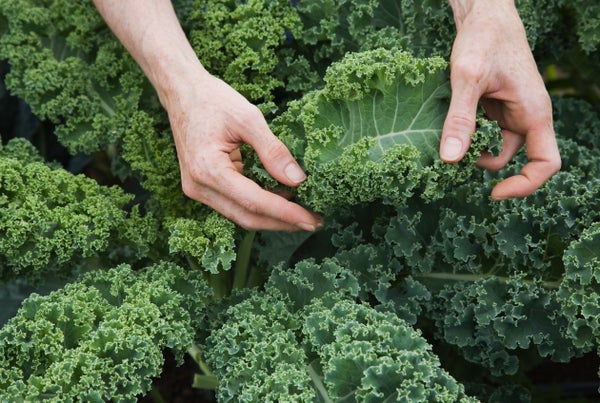A number of studies in recent years have shown that clean living—exercise, sleep, a Mediterranean diet—lowers one’s prospect of being diagnosed with Alzheimer’s. Some of these recommendations sound a little like a parent’s entreaty to a child to eat the daily apple or finish broccoli left on a plate. What does it really mean, though, to say that eating greens or berries diminishes risk? How much do such changes lower your chances of Alzheimer’s? And which specific chemicals help to ward off the most common type of dementia?
A study by researchers at Rush University Medical Center, published Wednesday in Neurology, tries to pin down some specifics—and in doing so, it demonstrates the benefits of using dietary measures to stay cognitively intact. The team took 921 participants without dementia from Rush' Memory and Aging Project, a large ongoing study that began more than 20 years ago. The recruits, who had a mean age of 81, were tracked for an average of six years.
Study members who followed a regimen with the highest flavonol levels—the top fifth—had a 48 percent lower risk of receiving an Alzheimer’s diagnosis than those in the bottom quintile. (Flavonols are a class of antioxidant and anti-inflammatory molecules found in foods.) As the study progressed, 28 people in the top flavanol group of 186 study members, or 15 percent, went on to develop Alzheimer’s. Meanwhile 54 of the 182 participants in the lowest quintile, or 30 percent, received such a diagnosis. The study’s takeaway is that “a healthy diet that contains various fruits and vegetables is critical for continued health—but especially brain health,” says Thomas M. Holland of Rush, who led the research.
On supporting science journalism
If you're enjoying this article, consider supporting our award-winning journalism by subscribing. By purchasing a subscription you are helping to ensure the future of impactful stories about the discoveries and ideas shaping our world today.
In the paper, the researchers dug deeper into the issue, analyzing the risk reduction for the four flavonols surveyed: isorhamnetin, kaempferol, myricetin and quercetin. People in the top quintile who ingested the most isorhamentin-rich foods—pears, olive oil, wine and tomato sauce—achieved a 38 percent risk reduction, compared with members in the lowest quintile. Kale, beans, tea, spinach and broccoli were the highest sources of kaempferol, which furnished a 51 percent drop in risk. Tea, wine, kale, oranges and tomatoes provided lots of myricetin, along with a 38 percent lower Alzheimer’s incidence. Tomatoes, kale, apples and tea are loaded with quercetin, but no health benefit was registered for that flavonol.
The biochemical composition of flavonols (part of a larger antioxidant class known as flavonoids) appears to enable them to quell inflammation and to scavenge free radicals in the blood and the gut to help prevent cellular damage. “This study adds to our understanding of which elements of a healthy diet may be important in reducing dementia risk,” says Keith Fargo, director of scientific programs and outreach at the Alzheimer’s Association, who was not involved in the new paper. “At this point,” he adds, “people should not put too much stock in specific nutrients—including subsets of flavonols—for reducing dementia risk until more research is done. Rather they should focus on eating an overall healthy diet.”
Also, getting your kaempferol from kale may be better than searching online for a supplement that contains the molecule. “There’s a multitude of vitamins, minerals, and bioactive substances in individual foodsthat you may not get if you're taking multiple supplements,” Holland says.
The Neurology study did not include a control group, so it was not able to establish a cause-and-effect relationship between dietary patterns and lowered risk. Future investigations also need to look at a more diverse group. Most of the new paper’s participants were highly motivated, white and well-educated, and three quarters were women.
The senior author of the study was Martha Clare Morris, who developed a diet called the Mediterranean–DASH (Dietary Approaches to Stop Hypertension) Intervention for Neurodegenerative Delay, or MIND, which has been linked to lower Alzheimer’s risk. Morris is now heading an effort to do a randomized controlled trial to confirm, with hard evidence, whether this diet really does serve as a preventive measure. When the results are in, it might actually be possible to counter jokes about kale with real data.
